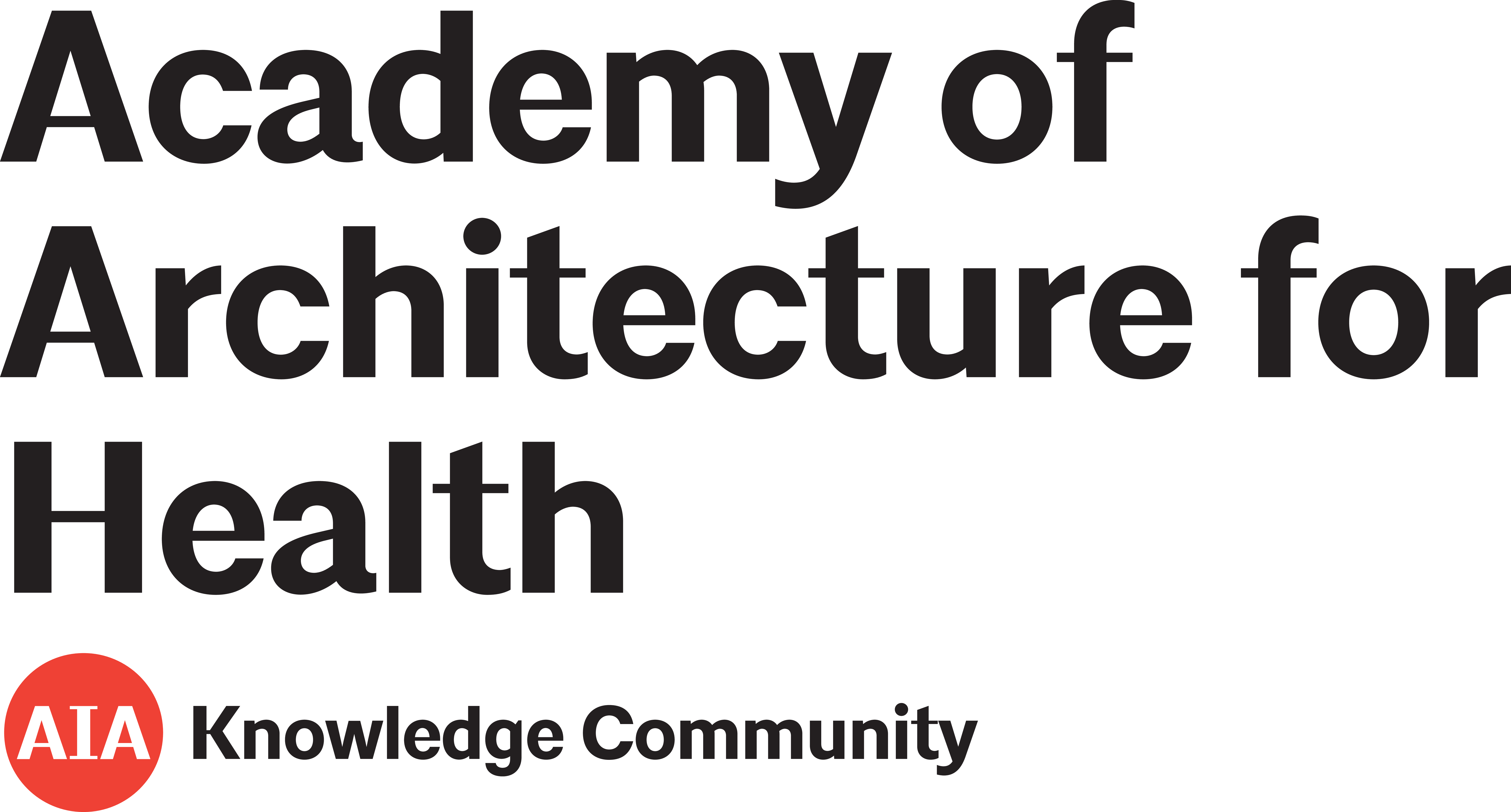Changing the “meaning of place” within a hospital: The impact of establishing an art gallery on esthetic experience, restorativeness, affective commitment, and work engagement of healthcare personnel
2024
Environment and Behavior
Journal Article
Author(s): Scrima, F., Nonnis, M., Mura, A. L., Foddai, E., Rioux, L., Fornara, F.
Added August 2024
Toward restorative hospital environment: Nature and art in Finnish hospitals
2024
HERD: Health Environments Research & Design Journal
Journal Article
Author(s): Heikkilä, M., Verma, I., Nenonen, S.
Added May 2024
A visit to David’s World: Exploring the impact of a passive art intervention on hospitalized children’s wellbeing, engagement, and joy
2024
Arts & Health
Journal Article
Author(s): Rollins, J.
Added April 2024
Resilience room use and its effect on distress among nurses and allied staff
2023
Journal of Neuroscience Nursing
Journal Article
Issue 3
Volume 55
Pages 80-85
Author(s): Prendergast, V., Elmasry, S., Juhl, N. A., Chapple, K. M.
The impact of COVID-19 on caregivers is well known, and while some research has been done regarding restorative staff spaces, a definitive strategy remains elusive. Features of restorative spaces can vary and the use of such areas is dependent on factors including patient acuity and staffing.
Added September 2023
Designing well-being: A qualitative investigation of young patients’ perspectives on the material hospital environment
2023
HERD: Health Environments Research & Design Journal
Journal Article
Issue 3
Volume 16
Pages 168-181
Author(s): Payam, S., Hossaini, J., Zaschka, K., Friedmann, A., Mall, V.
Healthcare design research often includes user perspectives, but typically focuses on adult input. Young patients can provide useful insights into the remodel of pediatric facilities to better meet their unique needs. Environments tailored to a variety of developmental stages and physical abilities are more welcoming and engaging for young patients.
Added May 2023
Aesthetics and dementia: exploring the role of everyday aesthetics in dementia care settings
2022
Design for Health
Journal Article
Issue 1
Volume 6
Pages 91-113
Author(s): Fleetwood-Smith, R., Tischler, V., Robson, D.
Research shows that dementia, an umbrella term for diseases that affect the brain, is characterized as a condition that causes problems with memory, cognition, and function with activities of daily living. In the United Kingdom, approximately 70% of the population identifying with a form of dementia are residing in a care home environment.
Added January 2023
An experimental research on the impact of spatial configurations of complex hospitals on human wayfinding performances
2022
IDA: International Design and Art Journal
Journal Article
Issue 2
Volume 4
Pages 235-251
Author(s): Aksoy, E., Aydın, D., İskifoğlu, G.
Research shows that human wayfinding behavior in hospitals depends on the spatial configuration of an environment. As successful wayfinding also depends on cognitive abilities, the crowded and busy hospital setting, compounded with any emotional distress, causes challenges for people when navigating the facility.
Added December 2022
Designing intergenerational spaces: What to learn from children
2023
HERD: Health Environments Research & Design Journal
Journal Article
Issue 2
Volume 16
Pages 174-188
Author(s): Norouzi, N., Chen, J.-C., Jarrott, S., Satari, A.
Research on intergenerational care programs where both children and older adults receive services in the same facility often relies on proxy reports from caregivers. The authors of this study sought to elicit perceptions of intergenerational care from the children who experience these environments.
Added November 2022
Cross-cultural design and healthcare waiting rooms for indigenous people in regional Australia
2022
Environment and Behavior
Journal Article
Issue 1
Volume 54
Pages 89-115
Author(s): O’Rourke, T., Nash, D., Haynes, M., Burgess, M., Memmott, P.
There is a lack of research exploring how modern medical waiting areas are perceived by Indigenous populations, and how these spaces might be improved to enhance the delivery of care.
Added August 2022
Art and mental health in the women's psychiatric intensive care unit
2020
Journal of Psychiatric Intensive Care
Journal Article
Issue 1
Volume 16
Pages 15-22
Author(s): Butler, S., Adeduro, R., Davies, R., Nwankwo, O., White, N., Shaw, T. A., Skelton, L., Shannon, G., Smale, E., Corrigan, M., Martin, D., Sethi, F.
Added April 2022
Evaluating an inpatient created art installation on perceptions of the physical environment, health status, and rehabilitation motivation
2022
HERD: Health Environments Research & Design Journal
Journal Article
Issue 3
Volume 15
Pages 96-111
Author(s): Lakhani, A., Waters, D., Dema, S.
Added February 2022
Evidence-based art in the hospital
2022
Wiener Medizinische Wochenschrift
Journal Article
Issue 9-10
Volume 172
Pages 234-241
Author(s): Fudickar, A., Konetzka, D., Nielsen, S. M. L., Hathorn, K.
Added September 2021
Art as contextual element in improving hospital patients’ well-being: A scoping review
2021
Journal of Applied Arts & Health
Journal Article
Issue 2
Volume 12
Pages 177-191
Author(s): Timonen, K., Timonen, T.
Added September 2021
Live music in hospital oncology settings: Environmental, interpersonal, and personal outcomes for staff, patients, and carers
2023
Arts & Health
Journal Article
Issue 1
Volume 15
Pages 1-17
Author(s): Apps, K., Sunderland, N.
Added July 2021
Comfort equals nurturing: Young people talk about mental health ward design
2021
HERD: Health Environments Research & Design Journal
Journal Article
Issue 4
Volume 14
Pages 258-269
Author(s): Hutton, A., Wilson, R., Foureur, M.
Literature demonstrates that patient care outcomes and satisfaction can be significantly influenced by the healthcare environment. This research focuses on the design of mental health wards for adolescent patients and highlights understanding and implementing the viewpoints of adolescent patients in the design of mental health spaces.
Added July 2021
Transforming the hospital experience through art
2021
‘Purpose-built’ Art in Hospitals: Art with Intent
Book Section
Author(s): Rollins, J.
Added May 2021
Intensive care unit built environments: A comprehensive literature review (2005–2020)
2021
HERD: Health Environments Research & Design Journal
Journal Article
Issue 4
Volume 14
Pages 368-415
Author(s): Verderber, S., Gray, S., Suresh-Kumar, S., Kercz, D., Parshuram, C.
ICUs have been extensively studied regarding the role of the built environment in issues of patient safety and infection control, patient-staff outcomes, and the interventional role of the physical environment. The results of this comprehensive literature review (2005-2020) demonstrate an increase in design of single-bed ICUs, increase in the engagement of families in the ICU experience, acknowledgement of improving caregiver well-being, performance through designing staff amenities, increased attention to the therapeutic role of exposure to nature and lighting, and increased pandemic concerns related to containment of the COVID-19 virus.
Added May 2021
Visual arts in children’s hospitals: Scoping review
2021
HERD: Health Environments Research & Design Journal
Journal Article
Issue 4
Volume 14
Pages 339-367
Author(s): Ullán, A, M., Belver, M. H.
Key Point Summary Coming Soon
Added April 2021
Patient perceptions of landscape and abstract art in inpatient cardiac units: A cross-sectional survey
2021
HERD: Health Environments Research & Design Journal
Journal Article
Issue 2
Volume 14
Pages 66-83
Author(s): Finkel, J., Printz, B., Gallagher, L. M., Au, A., Shibuya, K., Bethoux, F.
Previous studies have investigated preferred type of visual art (abstract or landscape) for people in healthcare environments as well as the implications of art choices; this research builds on that earlier work. Cardiothoracic surgery units are particularly interesting places to collect data related to art in corridors.
Added January 2021
Family members´ experiences of the end-of-life care environments in acute care settings – a photo-elicitation study
2018
International Journal of Qualitative Studies on Health and Well-being
Journal Article
Author(s): Hajradinovic, Y., Tishelman, C., Lindqvist, O., Goliath, I>
Research demonstrates that environmental features in varied healthcare settings can impact patient and staff outcomes. Room occupancy, acoustic environment, visual contact with nature, sound and lighting, ergonomics, and the work environment design are among the features with documented impacts on staff and patient health.
Added April 2020




